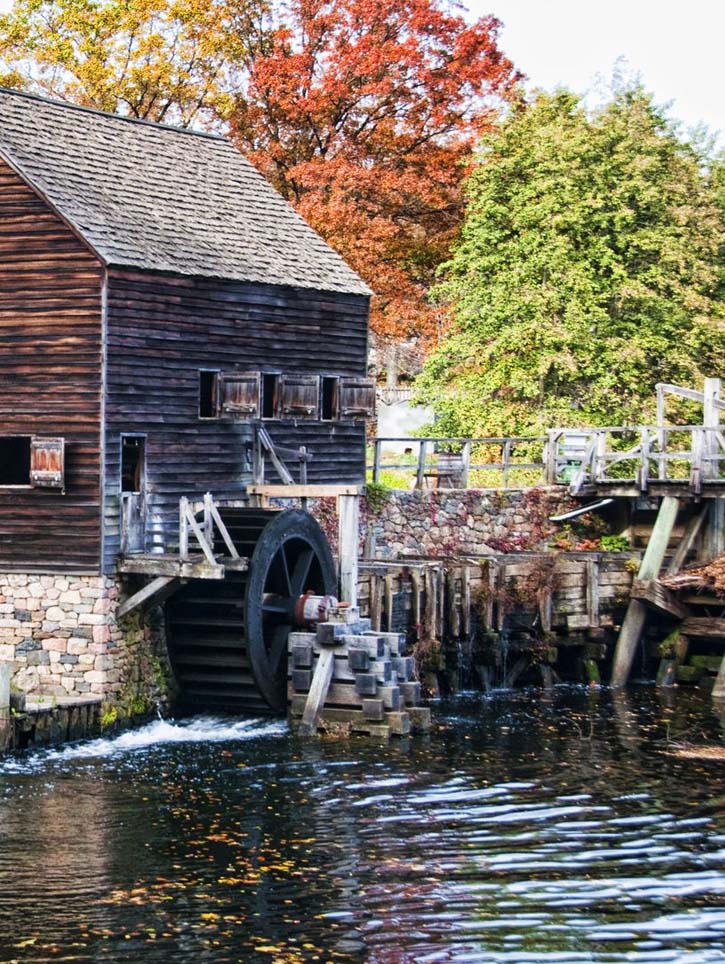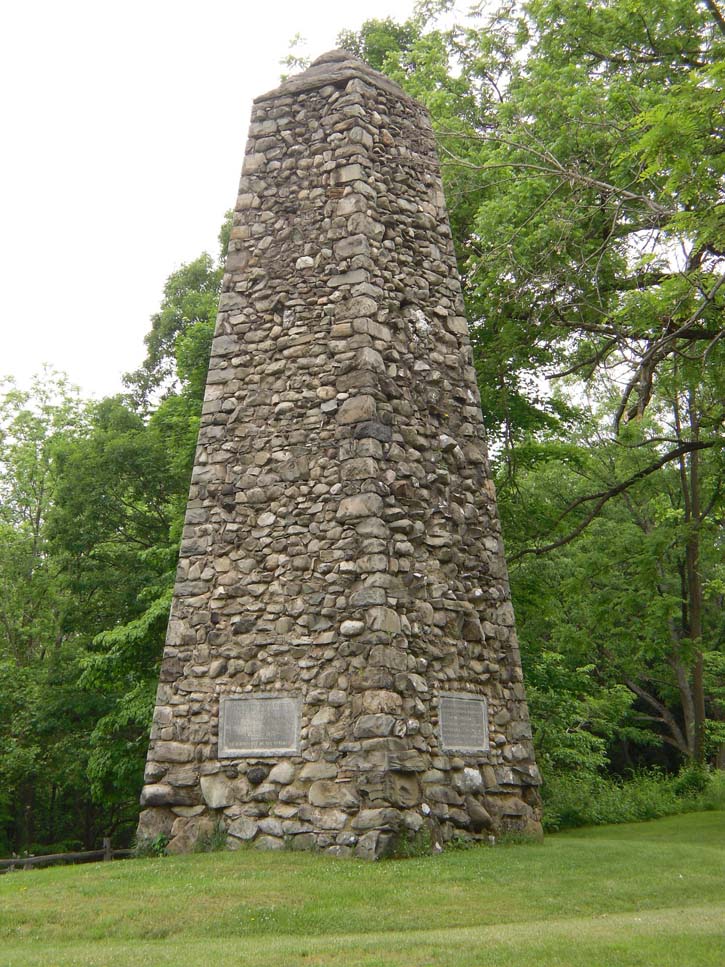This tour begins at the former home of loyalist Frederick Philipse III, who was arrested by General George Washington in 1776, after signing the Declaration of Independence. Both the family residence, Philipse Manor Hall in Yonkers, and the Philipsburg Manor in Sleepy Hollow were confiscated by the state and later preserved as museums. Situated in the neutral zone, Van Cortlandt Manor hosted loyalists and patriots alike during the war.

The mill at Philipsburg Manor in Sleepy Hollow. Photo © Cathy Kovarik/123rf.
An American victory at Stony Point Battlefield in 1779 boosted morale and severely damaged British forces. To reach this state historic site, cross the Hudson at the Bear Mountain Bridge and head south into Rockland County.
Retrace your steps north to the United States Military Academy at West Point, a training ground for army officers since 1802. The academy sits on the bluffs overlooking the narrow stretch of the river that was chained to keep the British out. You can begin your tour with a walk through the museum (outside the gate), which includes Washington’s pistols among its exhibits. Next, book a bus or river tour at the visitors center and have lunch at the stately Thayer Hotel just inside the campus gate. Add half a day for a visit to Constitution Island.
The first Purple Heart was issued at the Hasbrouck family farmhouse, where George Washington stayed for 16 months at the end of the war. Washington’s Headquarters in Newburgh became the first national historic site in the United States. His army camped at New Windsor Cantonment in Vails Gate, now also the site of the National Purple Heart Hall of Honor.

During the summer months you’ll find costumed staff demonstrating musket firing and other 18th century skills at the New Windsor Cantonment. Photo © Doug Kerr, licensed Creative Commons Attribution Share-Alike.
In the afternoon, visit the Mount Gulian Historic Site outside of Beacon, an 18th-century Dutch stone barn that once belonged to the Verplanck family and served as headquarters for Revolutionary War General Friedrich Wilhelm Augustus von Steuben.
In keeping with the historic theme, join the likes of George Washington, Philip Schuyler, Benedict Arnold, and Alexander Hamilton in spending the night at the 1766 Beekman Arms in Rhinebeck, where local townspeople gathered inside for safety while the British burned Kingston to the ground across the Hudson.
Today begins with a drive across the river to visit Kingston, a colonial city that the British burned to the ground. They landed at Rondout Battlefield, where periodic reenactments now take place. In Kingston’s Stockade District, the Senate House hosted the first Senate of New York State in 1777.
Cross the river on the Kingston-Rhinecliff Bridge and make your way north to Clermont, colonial estate of the Livingston family. The British torched it in 1777, but the family promptly rebuilt the home during the war.
Start the day with a drive across the Rip Van Winkle Bridge and continue north along Route 9W to the Bronck Museum, where New Yorkers signed the Coxsackie Declaration of Independence in 1775. From there, it’s about 25 miles north to Albany and the Schuyler Mansion, home of Major General Philip Schuyler and the place where British General Burgoyne was imprisoned after his defeat at Saratoga.
Complete the trip at the Saratoga National Historical Park, which commemorates the Battle of Saratoga. Here, you can follow a 10-stop auto tour that interprets the battle.
Excerpted from the Fourth Edition of Moon Hudson Valley & the Catskills.